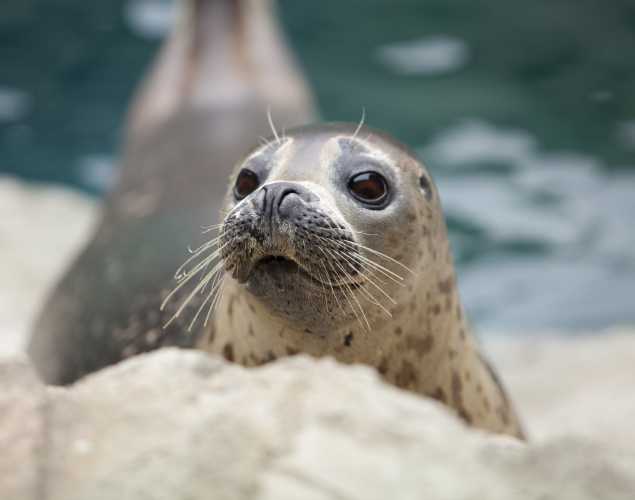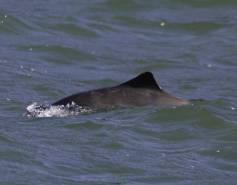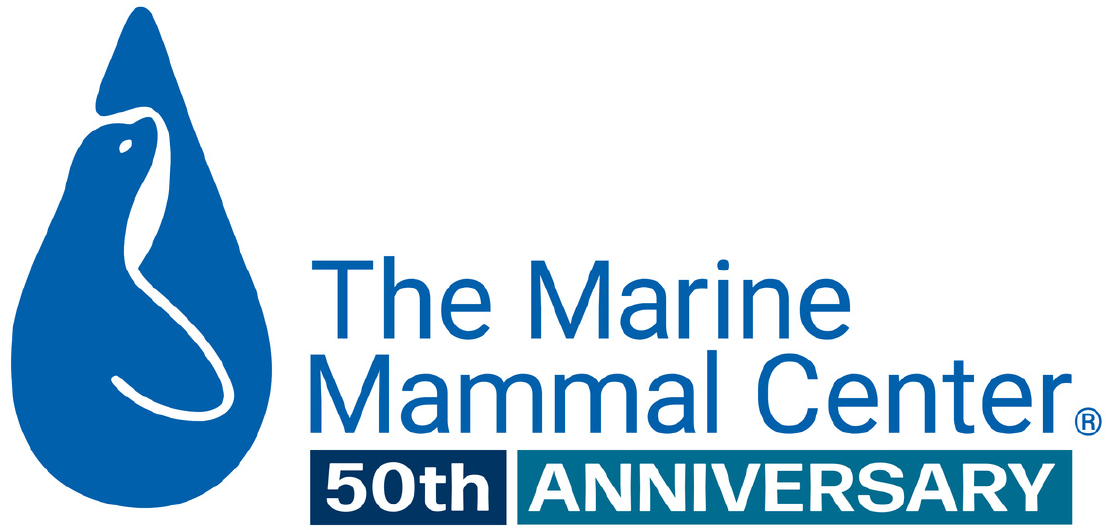
First Extralimital Record of an Eastern Pacific Harbor Seal Pup at Guadalupe Island, Mexico
- Natural history
Abstract
The Eastern Pacific harbor seal (Phoca vitulina richardii; hereafter "harbor seal") is a coastal phocid subspecies found along the west coast of North America, from the Aleutian Islands, Alaska, USA, to central Baja California, Mexico (Rice, 1998; Jefferson et al., 2015). The vast majority of the harbor seal population is found north of Mexico and is estimated at approximately 370,000 individuals (Bjorge et al., 2010). The population of harbor seals in Mexico is estimated to be approximately 5,000, and information regarding the abundance and distribution of these animals was lacking until recently (Lubinsky-Jinich et al., 2017). There are established rookeries for this subspecies at nine Mexican islands: Coronado, Todos Santos, San Martin, San Jerónimo, San Benito, Cedros, Natividad, San Roque, and Asunción (Figure 1). Around this latitude, the breeding season of the harbor seal is from mid-February to mid-April (Fernández-Martín, 2012). Harbor seals typically forage in coastal continental shelf waters, bays, and estuaries (Burns, 2009). In Mexican waters, harbor seals primarily feed on benthic fishes and cephalopods (Elorriaga-Verplancken et al., 2013, 2016; Durazo et al., 2015), and they primarily forage around islands that are 1.6 km (Asunción) to 70 km (San Benito Archipelago) offshore of the mainland Baja California coast (Lubinsky-Jinich et al., 2017).
On 15 April 2017, a small harbor seal (Figure 2) was sighted at the southern portion ("Punta Sur," 29° 01' N, 118° 16' W) of Guadalupe Island Biosphere Reserve. Guadalupe Island is an oceanic island approximately 255 km offshore of the west coast of Baja California, where the nearest known harbor seal colony is located, and 170 km offshore of the continental shelf break. Three other pinniped species breed on this island: the Guadalupe fur seal (Arctocephalus philippii townsendi), the northern elephant seal (Mirounga angustirostris), and the California sea lion (Zalophus californianus).
Orr, A.J., Norris, T.A., Galvez, C., Deming, A.C., Elorriaga-Verplancken, F.R. 2018. First extralimital record of an Eastern Pacific harbor seal (Phoca vitulina richardii) pup at Guadalupe Island, Mexico. Aquatic Mammals. 44(3): 279-284.
Related Publications
{"image":"\/Animals\/Wild\/Harbor porpoise\/cropped-images\/harbor-porpoise-by-bill-keener-c-the-marine-mammal-center-309-73-1207-943-1610670087.jpg","alt":"Harbor porpoise surfacing in the water","title":"The Sex Life of Harbor Porpoises: Lateralized and Aerial Behavior","link_url":"https:\/\/www.marinemammalcenter.org\/publications\/the-sex-life-of-harbor-porpoises-lateralized-and-aerial-behavior","label":"Research Paper"}

{"image":"\/Animals\/Wild\/Other species\/cropped-images\/stejnegers-beaked-whale-photo-c-marc-webber-0-0-949-742-1618440217.jpg","alt":"Stejneger's beaked whales","title":"Stejneger's Beaked Whale Strandings in Alaska, 1995\u20132020","link_url":"https:\/\/www.marinemammalcenter.org\/publications\/stejnegers-beaked-whale-strandings-in-alaska-1995-2020","label":"Research Paper"}

{"image":"\/Misc\/Graphics\/cropped-images\/marine-mammals-of-the-world-book-cover-wide-graphic-201-0-882-689-1618448911.jpg","alt":"Marine Mammals of the World book cover","title":"Marine Mammals of the World: A Comprehensive Guide to Their Identification","link_url":"https:\/\/www.marinemammalcenter.org\/publications\/marine-mammals-of-the-world-a-comprehensive-guide-to-their-identification","label":null}

Marine Mammals of the World: A Comprehensive Guide to Their Identification
Read More{"image":"\/Animals\/Wild\/Other species\/cropped-images\/striped-bass-shutterstock-754-2-4392-3430-1651011006.jpg","alt":"school of striped bass","title":"Seasonal Movement Patterns and Habitat Use of Striped Bass","link_url":"https:\/\/www.marinemammalcenter.org\/publications\/seasonal-movement-patterns-and-habitat-use-of-striped-bass","label":"Research Paper"}

Related News
{"image":"\/Animals\/Wild\/Hawaiian monk seal\/cropped-images\/hms-wild-photo-1-c-noaa-pifsc-hmsrp-35-0-1270-992-1759760452.jpg","alt":"A Hawaiian monk seal rests on its side on a sandy beach.","title":"Where Do Hawaiian Monk Seals Live? And Other \u2018\u012alio Holo I Ka Uaua Trivia","link_url":"https:\/\/www.marinemammalcenter.org\/news\/where-do-hawaiian-monk-seals-live-and-other-ilio-holo-i-ka-uaua-trivia","label":"News Update","date":"2025-10-06 00:00:00"}

Where Do Hawaiian Monk Seals Live? And Other ‘Īlio Holo I Ka Uaua Trivia
October 6, 2025
Read More{"image":"\/Animals\/Patients\/Elephant seals\/cropped-images\/es-hoffman47927-photo-by-bill-hunnewell-c-the-marine-mammal-center-124-0-1270-992-1748384535.jpg","alt":"An An elephant seal\u2019s face with long black whiskers and wide eyes emerges from the water. ","title":"Adaptations of the Deep: Seal Whiskers and Eyes","link_url":"https:\/\/www.marinemammalcenter.org\/news\/adaptations-of-the-deep-seal-whiskers-and-eyes","label":"Patient Update","date":"2025-05-28 02:00:00"}

{"image":"\/Animals\/Wild\/Humpback whale\/cropped-images\/humpback-whale-sea-lions-photo-c-bill-hunnewell-102-0-1270-992-1743014972.jpg","alt":"A California sea lion jumps out of the ocean next to a humpback whale showing its tail and another whale showing its back.","title":"What is the Loudest Animal on Earth? And Other Animal Trivia","link_url":"https:\/\/www.marinemammalcenter.org\/news\/what-is-the-loudest-animal-on-earth-and-other-animal-trivia","label":"News Update","date":"2025-03-26 07:00:00"}

{"image":"\/Animals\/Wild\/Guadalupe fur seal\/cropped-images\/gfs-wild-photo-by-marc-webber-193-0-1270-992-1739906952.jpg","alt":"A Guadalupe fur seal floats in the water with its flippers raised. ","title":"Your Visual Guide to Sea Lion and Seal Behavior","link_url":"https:\/\/www.marinemammalcenter.org\/news\/your-visual-guide-to-sea-lion-and-seal-behavior","label":"News Update","date":"2025-02-18 02:00:00"}

